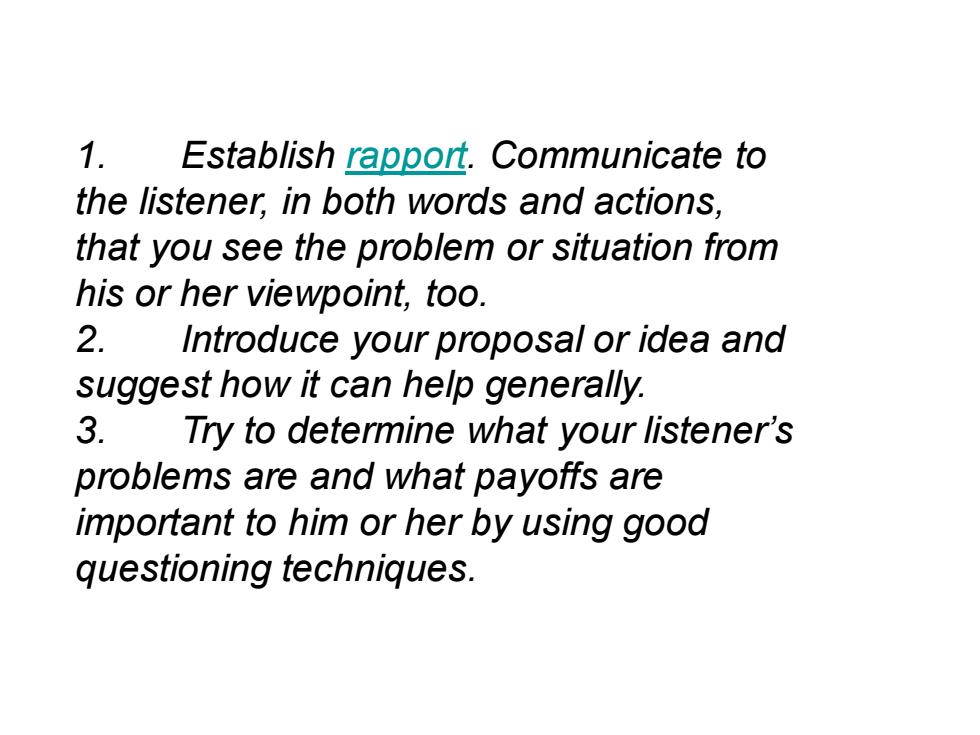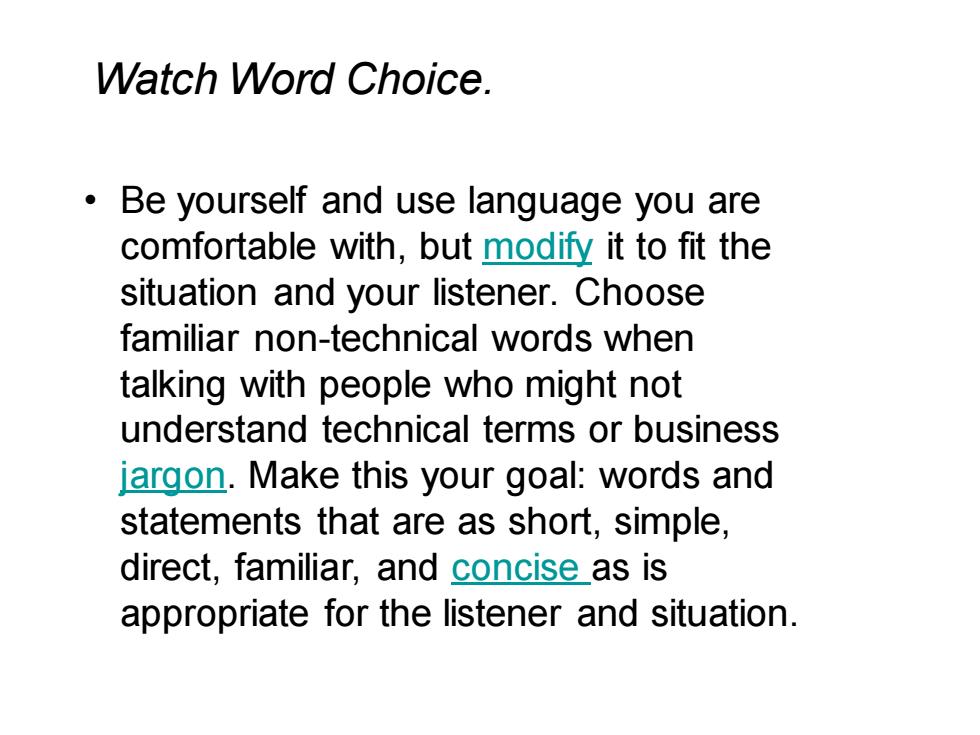
Developing the Art of Persuasion. Remember that people usually base actions more on feeling,opinion,and beliefs than on logic and reason.A rational approach is one that considers all the variables,and in most situations there are many variables we cannot be sure of. True rationality also considers people's emotions and other "illogical"factors. Here is a five-step sequence for persuasive communication:
Developing the Art of Persuasion. • Remember that people usually base actions more on feeling, opinion, and beliefs than on logic and reason. A rational approach is one that considers all the variables, and in most situations there are many variables we cannot be sure of. True rationality also considers people’s emotions and other “illogical” factors. Here is a five-step sequence for persuasive communication:

1. Establish rapport.Communicate to the listener,in both words and actions, that you see the problem or situation from his or her viewpoint,too. 2.Introduce your proposal or idea and suggest how it can help generally. 3.Try to determine what your listener's problems are and what payoffs are important to him or her by using good questioning techniques
1. Establish rapport. Communicate to the listener, in both words and actions, that you see the problem or situation from his or her viewpoint, too. 2. Introduce your proposal or idea and suggest how it can help generally. 3. Try to determine what your listener’s problems are and what payoffs are important to him or her by using good questioning techniques

4. Follow up with details to convince. Provide the listener with evidence that your proposal can help. 5.Maintain you credibility by avoiding too many strong adjectives,adverbs, superlatives,euphemism,or worn-out phrases:words that imply a certain knowledge of future events;and inappropriate surprise or amazement
4. Follow up with details to convince. Provide the listener with evidence that your proposal can help. 5. Maintain you credibility by avoiding too many strong adjectives, adverbs, superlatives, euphemism, or worn-out phrases: words that imply a certain knowledge of future events; and inappropriate surprise or amazement

Watch Word Choice. Be yourself and use language you are comfortable with,but modify it to fit the situation and your listener.Choose familiar non-technical words when talking with people who might not understand technical terms or business jargon.Make this your goal:words and statements that are as short,simple, direct,familiar,and concise_as is appropriate for the listener and situation
Watch Word Choice. • Be yourself and use language you are comfortable with, but modify it to fit the situation and your listener. Choose familiar non-technical words when talking with people who might not understand technical terms or business jargon. Make this your goal: words and statements that are as short, simple, direct, familiar, and concise as is appropriate for the listener and situation